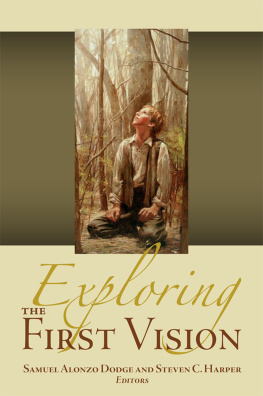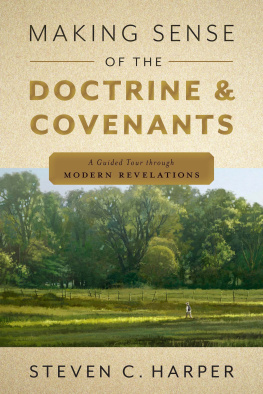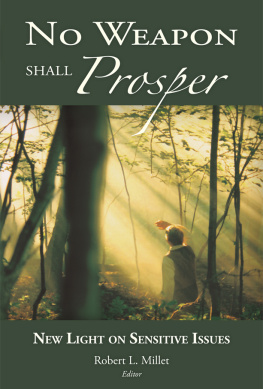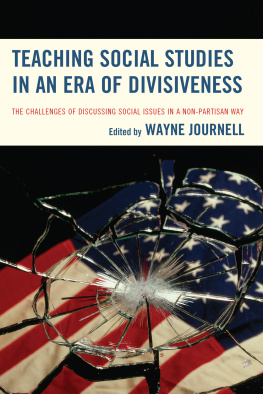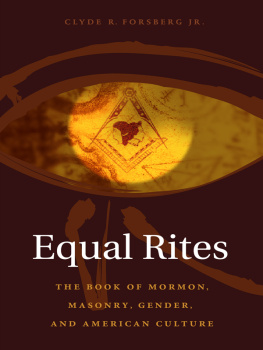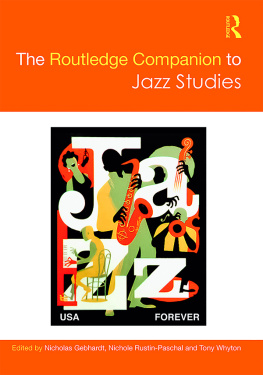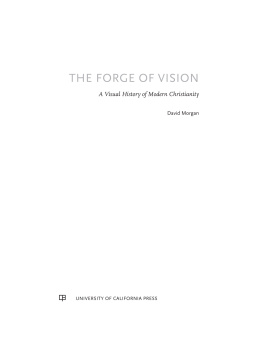2012 Brigham Young University.
Any uses of this material beyond those allowed by the exemptions in U.S. copyright law, such as section 107, Fair Use, and section 108, Library Copying, require the written permission of the publisher, Religious Studies Center, 167 HGB, Brigham Young University, Provo, Utah 84602. The views expressed herein are the responsibility of the authors and do not necessarily represent the position of Brigham Young University or the Religious Studies Center.
Printed in the United States by Sheridan Books, Inc.
Any uses of this material beyond those allowed by the exemptions in US copyright law, such as section 107, Fair Use, and section 108, Library Copying, require the written permission of the publisher, Religious Studies Center, 167 HGB, Brigham Young University, Provo, Utah 84602. The views expressed herein are the responsibility of the authors and do not necessarily represent the position of Brigham Young University or the Religious Studies Center.
Cover design by Art Morrill and interior layout by Katie Skovran.
Cover images: The Desires of My Heart Intellectual Reserve, Inc., If Any of You Lack Wisdom by Walter Rane, Intellectual Reserve, Inc., The First Vision by Del Parson 1988 Intellectual Reserve, Inc.
ISBN 978-0-8425-2818-4
US Retail: $25.99
Library of Congress Cataloging-in-Publication Data
Exploring the First Vision / edited by Samuel Alonzo Dodge and Steven C. Harper.
pages cm
Includes bibliographical references and index.
ISBN 978-0-8425-2818-4 (hard cover : alk. paper) 1. Smith, Joseph, 18051844First Vision. 2. Church of Jesus Christ of Latter-day SaintsHistory19th century. 3. Mormon ChurchHistory19th century. 4. Church of Jesus Christ of Latter-day SaintsDoctrines. 5. Mormon ChurchDoctrines. 6. New York (State)Church history19th century. I. Dodge, Samuel Alonzo, 1984 editor. II. Harper, Steven Craig, 1970 editor.
BX8695.S6E97 2012
289.3'2dc23
Acknowledgments
Samuel Alonzo Dodge
Many people known and unknown to me have enabled me to compile this anthology. Susan and Harvey Black provided the mentoring grant that made it possible. Ann and John Lewis generously added to the fund. The Office of Research and Creative Activities, the backbone of a vibrant culture of undergraduate research and creativity at Brigham Young University, provided still more funding and support.
I also thank Ann Madsen and Emily Reynolds, widow and daughter of Truman G. Madsen, respectively, for giving me access to Professor Madsens papers. Emily Reynolds was especially helpful. While still engrossed with the enormous task of sorting and archiving her fathers papers, she spent several hours sitting at my side helping me as I searched through her fathers documents.
The staff at the Church History Library in Salt Lake City facilitated my research. Religious Education at BYU, especially the Religious Studies Center, provided support in various ways and means. Professor Steven C. Harper patiently guided me with invaluable insight as I pursued this project. His role as my academic mentor and friend will influence my historical studies for years to come. Thanks also to the Religious Studies Center staff, including Devan Jensen, Brent Nordgren, Jonathon Owen, Art Morrill, Jeff Wade, Nyssa Silvester, Heidi Sutherland, Dana Kendall, and Katie Skovran, for their editing and design work.
Finally and most importantly, I acknowledge the scholars whose pieces comprise this anthology: historians James B. Allen, Richard L. Anderson, Milton V. Backman Jr., Richard L. Bushman, Steven C. Harper, Dean C. Jessee, Larry C. Porter, and John W. Welch. They generously invited me into their lives, allowing me to interview them. Excerpts of these interviews are printed in the shaded sidebars, and some video excerpts are posted on YouTube. These scholars have given permission to republish in this book some of their finest work. Their seminal articles on Joseph Smiths First Vision deserve to be preserved and made widely known to rising generations (D&C 69:8).
Preface: Standing on the Shoulders of Giants
Steven C. Harper
Todays scholars of Joseph Smiths First Vision stand on the shoulders of giants. The saying is at least as old as Bernard of Chartres, who reportedly said that medieval professors like himself see more and farther than our predecessors, not because we have keener vision or greater height, but because we are lifted up and borne aloft on their gigantic stature. This volume reproduces some of the seminal articles that analyze Joseph Smiths First Vision written by the giants who have studied it for half a century. It is a monument to their contributions, composed of their work.
The past of First Vision scholarship is indispensable to the present. Those of us who study the First Vision depend very much on the works of the scholars that are reprinted in this volume. Moreover, much of the source material on which their articles are based and on which we depend, they discovered and published. We are beginning to explore further because we can see from their shoulders. This volume contains much of their mentoring.
It also serves as a mechanism for ongoing mentoring. It began with a realization that the work of the scholars republished hereafter, though well known to the students of these venerable mentors, is little known to the rising generations (D&C 69:8). This volume preserves and recommunicates that work, if only to the promising young historian Samuel Alonzo Dodge, who interviewed eminent First Vision scholars, gathered their seminal articles, and arranged them for publication here with a contextual introduction he composed. Brigham Young University invests its resources in mentoring the rising generations, including by funding and publishing this project. Those funds were generously supplemented by one of my mentors, Susan Easton Black, and her late husband, Harvey Black. Sam and I gratefully dedicate this volume to them. With a profound sense of indebtedness to the scholars whose work is republished on the following pages, we offer this volume as a monument to the work of my mentors and as a mechanism for continuing to communicate their important work to the rising generations.
Notes
John of Salisbury, The Metalogicon (Berkeley: University of California Press, 1955), 167.
H. W. Turnbull, ed., The Correspondence of Isaac Newton, 16611675 (Cambridge: Cambridge University Press, 1959), 1:416.
Joseph Smiths First Vision: Insights and Interpretations in Mormon Historiography
Samuel Alonzo Dodge
The analysis and teaching of history does not occur in a vacuum. Modern perceptions of history are shaped by new scholarly work, and that work grows out of the debate which has already taken place. In short, the scholarship that went before set the stage for the debates of the present. This is particularly evident as one studies the historiography of Joseph Smiths First Vision. For years, the historical discussion of Mormonisms early periods tended to one of two camps: critics who sought to defame Joseph Smith and discredit the religious movement he launched, or Mormon supporters whose efforts to exonerate the Prophet often resulted in excessive glossing of the blemishes found in the Churchs origins.
Josephs claims of seeing God and Christ in western New York first received detailed scrutiny in Fawn Brodies well-known biography published in 1945. In her book No Man Knows My History

